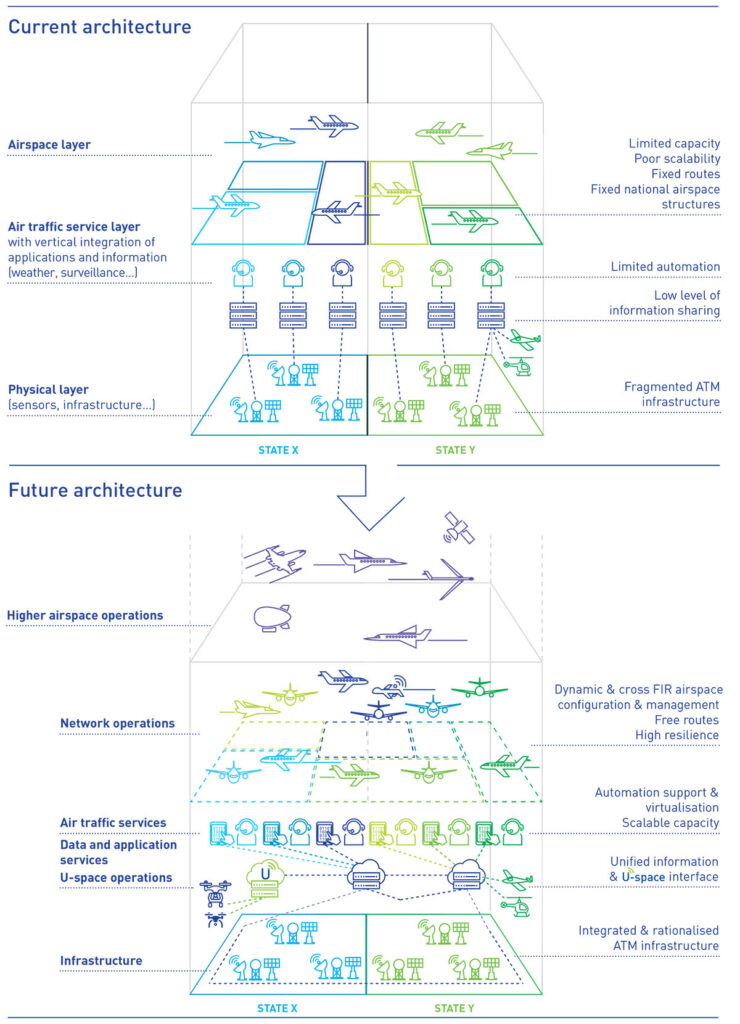Exploring Europe: What is the Single European Sky?

Written by: The Proficient Airman, Mubashar Yasin.
30th September 2022
The Single European Sky (SES) is an initiative to reform the current European airspace. The SES programme was set up to address challenges, such as capacity, fuel burn and CO2 emissions.
Currently, the European airspace is divided along national borders in the sky with most European countries cooperating through the EU aviation network manager, Euro-control. In addition to this, large areas of airspace are reserved for national military – and in most cases these remain out of use outside of exercise and training missions.
Therefore, the current airspace is outdated with borders failing to optimise flight paths and reserved airspaces contributing to significant financial and environmental costs.

What ambitions have been set for the Single European Sky?
- Enhanced safety via efficient air traffic management
- Pan-European co-operation of air traffic services
- Operational excellence and reduced delays: via releasing scarce airspace and direct routing through member states
- Demand-driven air navigation service and air traffic architecture to address capacity
- Integrated airspace management cell (AMC) – a dual-use military-civil flexible airspace
- Overall, lower carbon emissions and financial costs
The EU commission established the underpinning structure of the SES under four key components. These includes:
From productivity (pan-European ATC), integrated services (implementing the functional airspace blocks for optimising performance) and network management (improved EU route network and the management of the Single European Sky ATM Research – SESAR)
Functional Airspace Blocks (FAB) is the re-structuring of a fragmented airspace into seamless airspace based on ‘operational requirements’ through cross border cooperation.
Currently, there are 9 FABs across 31 countries in agreement; two of which are formally recognised by the EU Commission. These are the UK-Ireland FAB and the Denmark-Sweden FAB. Since the UK-Ireland FAB was introduced in 2008 it has helped airlines save over €335 million and 330,000 tonnes of jet fuel. This an example of how well this initiative has the potential to work if successfully implemented all over the EU.
SESAR (Single European Sky ATM Research) Joint Undertaking is a partnership of member EU states to accelerate research, innovation and implementation of new systems (e.g. European ATM system) that replace obsolescent technologies from the fragmented EU aviation network.
Given increasing demands in travel and more congested airspaces, safety and regulation is paramount. For example, Euro-control role has extended to manage the EU ATM network and is in close co-operation with airports, airspace users, air navigation services and the military. In addition to this Eurocontrol supports EASA, the EU Commission and the national supervisory authority.
The EU commission advise for adequate investment to ensure airport capacity is managed accordingly to preserve capacity, efficiency, and safety across the EU network.
Full integration of the SES across member states is anticipated (by 2020-35). The EU commission faces a huge challenge to scale this given its huge scope and reluctance from member states to address airspace flexibility.
